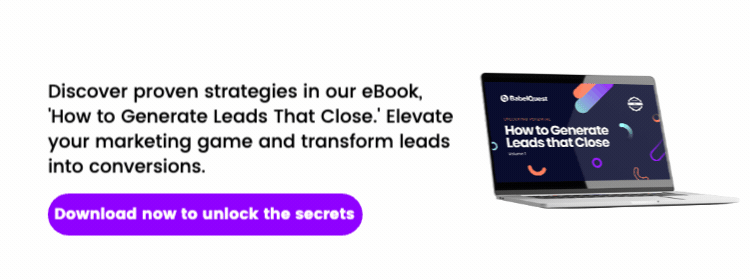The differences between inbound vs outbound marketing could be holding your marketing back from delivering results, generating leads and helping your business to grow. What are they?
Hands up if you’re using an adblocker. You’re not alone. Last year, it was reported that around 1 in 10 of us are using some sort of adblocking extension on our web browsers, and that’s a steadily increasing number. With 615 million devices (and counting) now use adblock, saying ‘no’ to adverts is now considered mainstream — for all ages.
75% of us have started to avoid websites with adblock walls.
We skip adverts whenever possible, and if — god forbid — we’re forced to actually sit through one, we often disengage. It’s the same with outbound marketing. In a digital world where advertising and marketing are constant, we’ve lost our tolerance.
Why is this, and what does it mean for the way you reach and engage the customers you depend on to hit your targets and grow your business?

Inbound vs outbound marketing methods
It could be because the marketing we’ve grown up with takes an interruptive approach to engage us. Traditional or ‘outbound’ marketing is attention seeking, loud, and more than a little needy.
Traditional outbound methods are focused, for the most part, on catching a customer’s attention. Like Blade Runner’s blinding neon billboards, they demand to be noticed, and savvy consumers simply aren’t willing to negotiate anymore. We know too much. We’re too aware of what it is that companies want — our attention and eventually our money. Fine, but what’s in it for us?
With your most recent marketing strategy in mind, consider the following:
- Searching for solutions to our problems using the computers most of us carry in our pockets is second nature. Today’s consumers have all the tools they need to actively seek out information for ourselves. We’re looking for content deliberately and easily, while algorithms that learn from our interests and needs are curating it for us.
- With such a wealth of content being generated every day, we’ve all had to become a lot more discerning about what we choose to engage with. Content that doesn’t offer value simply gets trampled under a seething mass of clickbait, but content that answers a question or solves a problem could be shared with countless people. Thanks to social media, the crowd decides what’s worthy of everybody’s attention.
- We expect convenience and flawless service from the businesses we choose to interact with, and if we don’t get it, we’re more than happy to look elsewhere. Clever UX teams have whittled down our tolerance for pain points to such an extent that it really doesn’t take much for a prospect to lose faith — and for you to lose a customer as a result.
- We want personalised experiences and marketing that speaks to us. As a result, we’re leaning more heavily on companies who take the time to listen, understand and address customer pain points. The companies who do this successfully are capable of raising an army of customer advocates. According to marketing automation software giant HubSpot’s 2018 global report, word of mouth is currently the most popular source of information for people making purchase decisions, so if your marketing campaign is irritating or alienating people, it’s definitely time for a rethink.
This shifting landscape means that traditional marketing campaigns aren’t getting the results they used to. They’re failing to get traction, and it’s difficult to figure out which tactics still work for boosting performance.
Rather than generating content with selling in mind, consider the impact of messaging that focuses more on creating content to help, educate, and empower the viewer. Inbound marketing operates using the following logic: if your content is built around solving a problem for your reader, they’ll seek it out for themselves. There’s no need to keep shouting at a disengaged audience when its already coming to you with outstretched hands.
What is inbound marketing? Find out more.
Does inbound marketing work?
It’s not an untested approach to marketing; plenty of studies exist to validate its impact. In its annual State of Inbound report, HubSpot found that inbound is a global methodology, with 3 in 4 EMEA companies primarily conducting inbound marketing strategies, and 75% of those teams reporting that the strategy works for them. They found that paid advertising (that’s outdoor, broadcast, or print) has fallen out of favour, with 30% of marketers choosing it as the most overrated marketing technique.
Finally, when it comes down to the bottom line, an overwhelming majority of companies reported that inbound marketing resulted in higher ROMI than traditional interruptive tactics.
The trick is in creating a marketing campaign that provides value and is designed to help — not sell.
It’s about building a relationship with your customer. Answer a question for them once and they’re much more likely to come to you again in the future. Solve their problems consistently, and they’ll begin to trust you as an authority. It should go without saying that being considered an authority helps immeasurably when it comes to making a successful sale.
Modern businesses should always be aiming to grow sustainably, and with recent shifts in connectivity, technology and marketing software, we should all be changing the way we communicate with our audiences. Most companies are now aware of the fact that they need to have a digital marketing plan but are still trying to use obsolete marketing tactics — a square peg and round hole. A fundamental change is needed.
Don’t interrupt your customer’s day to tell them why your brand is the best. Focus instead on producing content and building a relationship that shows them. They’re already searching for help in your area. The rest follows.
Tired of shouting into the void? Download our free, 80-page ebook to learn how an inbound approach could transform your marketing performance and drive tangible revenue growth for your business.







.png?width=50)

.png?width=50)
.png?width=50)


































